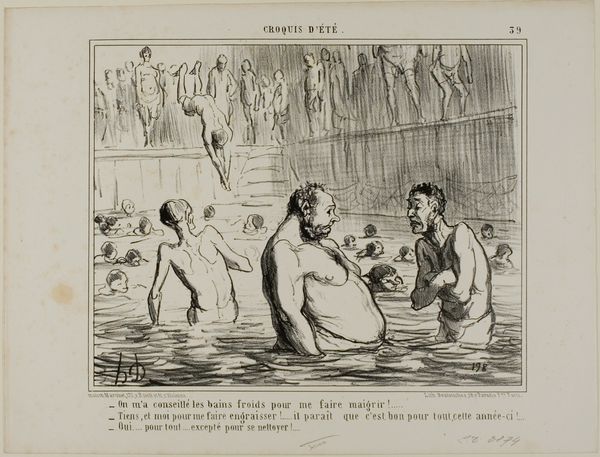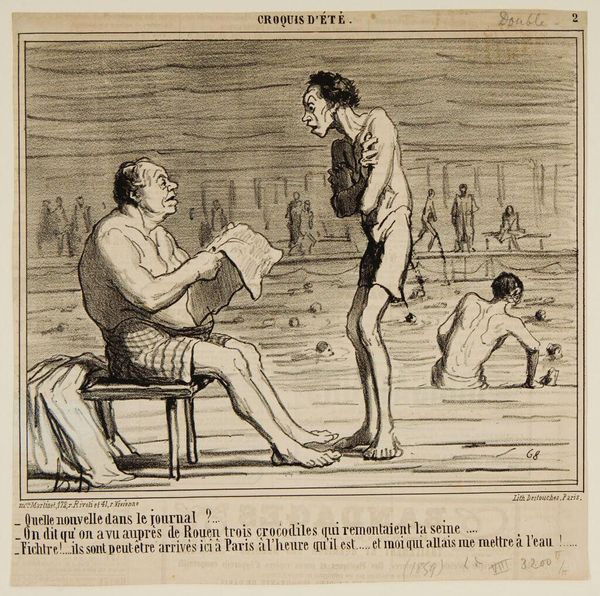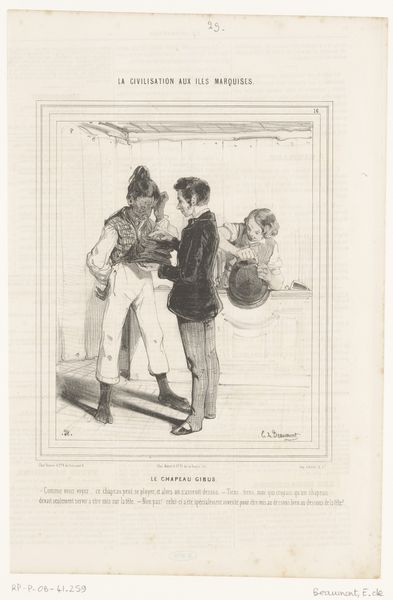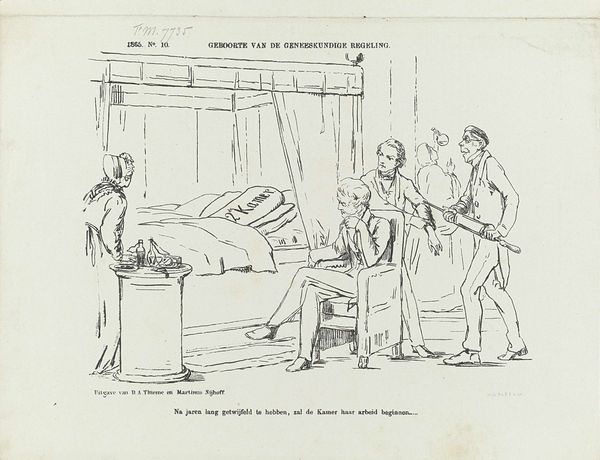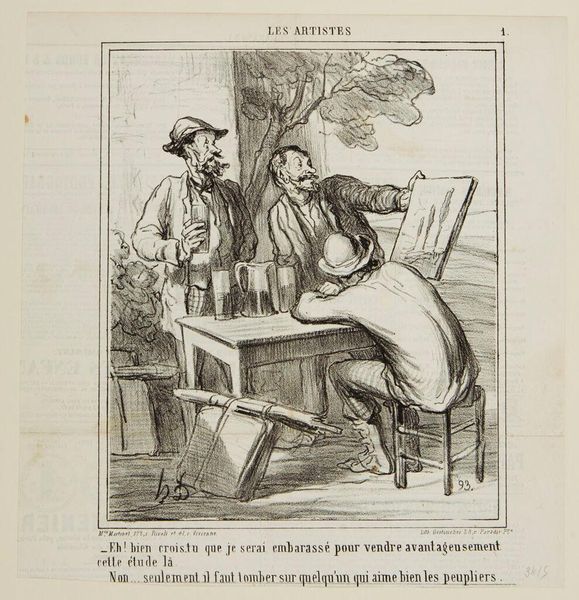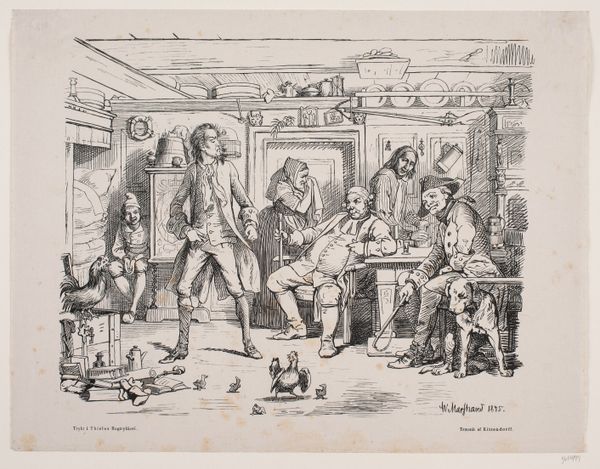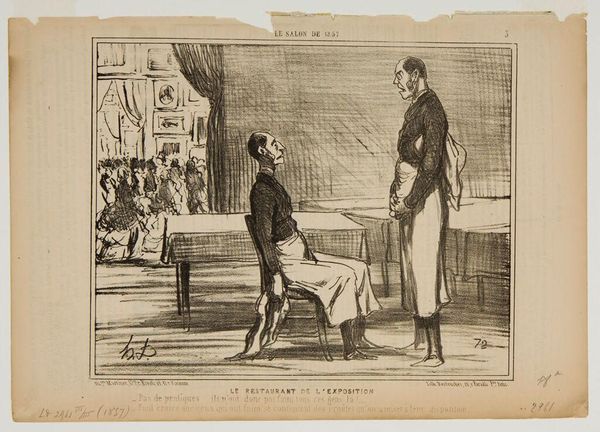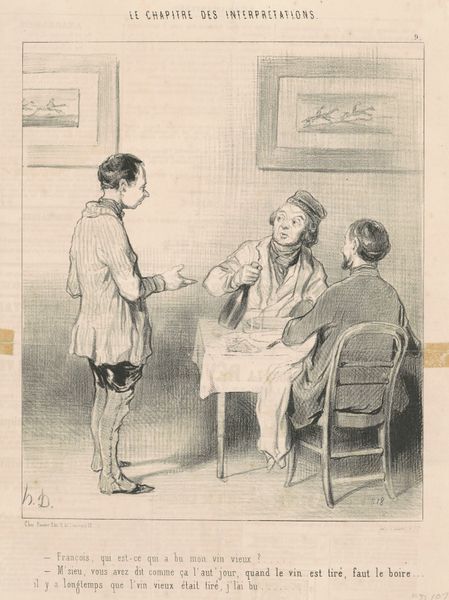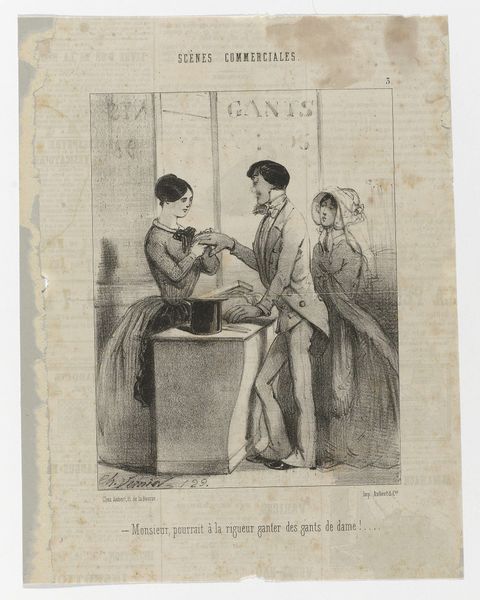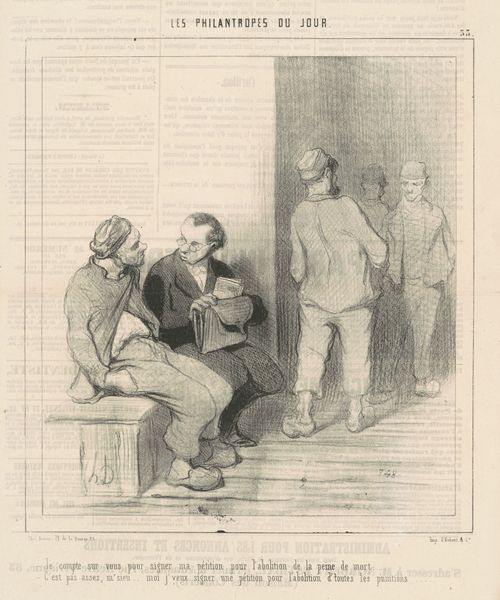
“You know, Monsieur Beaufumé, actually you have kept damned well considering your age. This costume suits you perfectly.... just too bad that it does not look good on everybody,” plate 36 from Croquis D'été 1858
0:00
0:00
drawing, lithograph, print, paper
#
drawing
#
lithograph
# print
#
french
#
caricature
#
figuration
#
paper
#
france
#
genre-painting
#
modernism
Dimensions: 205 × 262 mm (image); 274 × 360 mm (sheet)
Copyright: Public Domain
Curator: Honoré Daumier's lithograph from 1858, plate 36 from “Croquis D'été,” immediately strikes me as an awkward and unsettling depiction of leisure. Editor: Yes, it’s a scene loaded with a peculiar tension. The figures are drawn with such expressive distortion, and there's a sense of critique directed at the bourgeoisie present even without understanding the French caption. It looks like we are intruding upon them somehow. Curator: I see it as a potent social commentary, deeply rooted in its historical context. Daumier uses caricature to dissect the societal norms and superficialities of the French middle class. He captures a specific type of male performance. Editor: Can you elaborate on the setting itself? What do we know about bathhouses in that period, for instance? Curator: Absolutely. Bathhouses in 19th-century France were not simply places for hygiene; they became social spaces where class distinctions were often flaunted, sometimes intentionally. Daumier masterfully critiques this display, particularly its relationship to ageing, virility and the male body. The implied narrative—a man congratulating another on aging well while subtly mocking how he looks in his bathing costume— speaks volumes. Editor: Right, and the public role of imagery comes to bear when considering the broader cultural attitudes concerning these very class dynamics in 19th century France. Daumier’s imagery provided an accessible visual language for dissecting social hierarchies and moral hypocrisies. Curator: It really does. Through these seemingly simple lines etched on paper, Daumier's perspective underscores a critical, often cynical, commentary. The choice of lithography—a readily reproducible medium— also underscores its intention to be widely seen and absorbed by society. Editor: Daumier’s legacy is undeniably significant. Thinking about the power of political imagery to shape public discourse still resonates deeply. Curator: I completely agree. His work highlights the importance of considering the artwork as situated within specific intersectional narratives concerning race, gender, class, and of course, political power.
Comments
No comments
Be the first to comment and join the conversation on the ultimate creative platform.
